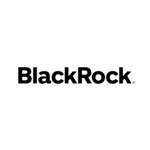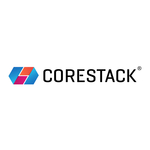Global Point of Sale (POS) Terminal Market – Growth, Trends, COVID-19 Impact, and Forecasts (2021 – 2026)
The global POS Terminal market was valued at USD 72. 28 billion in 2020 and is expected to reach USD 116. 27 billion by 2026, registering a CAGR of 8. 3%, during the forecast period of 2021-2026. The POS terminal market has grown significantly over the past few years, owing to its ability to offer an increased return on investment and ease of access.
New York, Nov. 03, 2021 (GLOBE NEWSWIRE) — Reportlinker.com announces the release of the report “Global Point of Sale (POS) Terminal Market – Growth, Trends, COVID-19 Impact, and Forecasts (2021 – 2026)” – https://www.reportlinker.com/p06179091/?utm_source=GNW
POS systems that facilitate transactions from the central component of businesses across industries, like retail, hospitality, transportation, and banking, have gained importance in companies of small and big sizes over the years.
Key Highlights
– POS terminal systems have evolved from being transaction-oriented terminals/devices to systems that can integrate with the company’s CRM and other financial solutions. This evolution has empowered end-users with business intelligence to manage their revenue streams and inventory better. Lower maintenance costs, accurate transactions, and real-time inventory are key advantages of the POS systems. With the functional benefits that the advanced POS systems offer, companies have replaced their traditional billing software with POS systems, thus, securing the growth of the POS system market.
– The modern POS terminals reduce the cost from setup, deployment, maintenance, and power consumption over time, leading to the total cost of ownership. Various vendors offer modular POS terminals with attributes such as touchscreen displays and low power consumption, which helps in reducing the overall cost of ownership. Companies such as Sharp Electronics, Aures Technologies, and others offer fixed POS solutions with touchscreen displays and robust processors that help improve operations and reduce failures. In addition, the POS offered by Aures comes with fanless temperature control to reduce the number of moving parts in a terminal.
– In addition, vendors are launching new solutions on a leasing basis, promoting the market’s growth. For instance, Vectron Systems AG offers its Vectron POS 7, launched in September 2020 on a leasing trade basis and upfront payment. The POS system is designed for bakeries and the catering industry. Similarly, Mswipe Technologies offers various products on a leasing trade basis.
– Further, the COVID-19 pandemic has significantly transformed the way consumers shop, affecting several verticals of the market. The retail sector witnessed a drastic change due to the pandemic. Consumers have also increased their use of various sales methods, such as curbside pickup, virtual consultations, contactless payment, and even social commerce, i.e., shopping through social media. According to the latest retail experts and shopper surveys, this new behavior is expected to stay over the forecast period. Such trends have affected the demand for POS terminals across regions.
– However, the challenge posed to the market’s growth is the security concerns due to the usage of critical information. POS terminals are connected to the network and the internet, making them vulnerable to attacks to gain access to and manipulate it like any other insecure machine. The way the terminal communicates with the rest of the network means attackers could access unencrypted card data, including Track2 and PIN information, providing all the necessary information required to steal and clone payment cards.
Key Market Trends
Hardware Segment to Account for the Largest Market Share
– The scope of hardware components primarily constitutes standalone POS terminals (transaction enablement units) and an integrated POS system that features additional transactional capabilities. While a lot of legacy hardware has typically been modular, the advent of All-In-One units has allowed for the deployment of fixed units and portable POS tablets in the market, which features built-in payment terminals, scanners, and printers.
– In some countries, credit and debit cards are only processed via payment terminals, owing to a belief that physical attributes offer reliability. This tradition has allowed counters to be overridden with terminals in stores typically. The demand is further supported by the fact that credit and debit card data is comparatively less vulnerable to hackers, unlike when payment cards are processed through a POS system where the security measures are dependent on end-users and developers.
– Owing to the security threats, most new hardware that is manufactured for the market is designed around enabling smoother transactions. But, the forced distancing due to the pandemic has spurred the development of contactless payments with dedicated authentication features. The addition of cameras and fingerprint sensors is forcing for larger form sizes but is also subsequently being countered by developments in the industry which are allowing manufacturers to go smaller in the hunt for micro-electronics. For instance, VisionLabs announced the LUNA POS terminal, a terminal certified by Visa PayWave, and Mastercard Contactless designed to permit transactions from both traditional credit card transactions and contactless face biometrics. NFC, RFID, chip, and magnetic stripe card transactions are also supported as alternatives to facial authentication.
– The growth of supermarket retailers globally has fueled the demand for mPOS solutions worldwide. According to a study by Visa, across the wider Middle East, North Africa, and South Asia region, the UAE showcased the highest annual spend per online shopper at USD 1,648. Visa transaction data further supported the observation, showing that the country continues to maintain a healthy lead in average transaction size compared to both mature and emerging e-commerce markets.
– Further, E-commerce is also beginning to demand more interest as online marketplaces took over the shopping experience during the pandemic. Shopify launched integrated retail hardware for Shopify Point of Sale (POS) and Shopify Payments for in-person transactions in New Zealand. The machine was dedicated to allowing retailers to process transactions and accept a variety of payment methods with a fully mobile POS and respective hardware.
Asia Pacific is Expected to Hold Largest Market Share
– Asia Pacific is a region at the forefront of technology adoption, which is also influencing the growth of the market for POS terminals. The prominence of cashless payments in different countries is also a factor that creates new opportunities for the market. According to a 2020 survey by Visa Inc., the adoption rate of cashless payments in Singapore accounted for 98%, followed by Malaysia (96%), Indonesia (93%), Vietnam (89%), Philippines (89%), and Thailand (87%).
– The use of debit and credit cards in point-of-sale payments is also a factor that is driving the need for POS terminals. According to Worldpay, in 2020, digital or mobile wallets accounted for the largest share of point-of-sale payment methods in the Asia-Pacific region, with over 40% of payments. This was followed by card payments (debit and credit), which accounted for 33.6% of the payments, and cash (19.2%).
– Further, the investments by the vendors in the region through innovation, strategic partnerships, and mergers and acquisitions are driving the growth of the market in the region. In November 2020, Worldline partnered with Yes Bank o launch the SMS Pay functionality on POS terminals, enabling merchants to accept contactless and remote payments from their customers. The new functionality enables shopkeepers and merchants, including local Kirana stores and departmental stores, to request payments against invoices.
– On similar lines, in March 2021, MYPINPAD, a prominent player in PCI-certified payments software solutions, together with Hong Kong’s leading payment terminal manufacturer and payment solution provider, SPECTRA Technologies, announced the launch of a software-based contactless payments solution for smart devices that enhances the customer experience for small and micro-merchants in Hong Kong. Mastercard also partnered with both companies to further expand the Mastercard Tap on Phone acceptance network with the launch of the new SoePay solution.
– Moreover, the growth in e-commerce in the region is also a factor presenting new opportunities for the POS terminals market. According to a study by Reprise and Google conducted in the first half of 2021, in the region, regular ‘a few times a month’ online shoppers are now outpacing their offline counterparts by 42% vs. 31% and those who shop online ‘once every few months’ leapfrog offline shoppers by 66%. Also, according to the study, the region has leapfrogged as much as five times, already meeting projections for 2025. (n=13,000).
Competitive Landscape
The global point of sale terminals market is highly fragmented with the presence of a large number of players like iMetrics Pte Ltd, Samsung Electronics Co. Ltd, Panasonic Corporation, Casio Computer Co. Ltd, NEC Corporation, etc., that occupy around half of the market share. Moreover, these players are investing large amounts of money in R&D activities to introduce innovative payment technologies in the market. Strict government regulations and policies in several countries will drive the market, making it more attractive and competitive. Some of the key developments in the market are:
– June 2021 – Samsung Electronics introduced Samsung Kiosk, an all-in-one solution that offers contactless ordering and payment capabilities. Providing customers with easy install options and a protective coating, the Kiosk is now available in 12 countries worldwide, including the United States, Canada, the United Kingdom, Ireland, France, Sweden, the Netherlands, Belgium, Spain, Austria, Australia, and Singapore. Kiosks have quickly become a part of everyday life, providing customers with a simple and interactive way to purchase items while giving businesses an innovative solution to reimagine the workplace and increase efficiency.
– July 2021 – Oracle acquired GloriaFood, an online ordering and marketing platform, to extend its Oracle Micros Simphony Cloud POS platform. According to a press release, the acquisition, completed at the end of June now provides Oracle’s restaurant customers to serve diners directly through the web, mobile, and apps.
Additional Benefits:
– The market estimate (ME) sheet in Excel format
– 3 months of analyst support
Read the full report: https://www.reportlinker.com/p06179091/?utm_source=GNW
About Reportlinker
ReportLinker is an award-winning market research solution. Reportlinker finds and organizes the latest industry data so you get all the market research you need – instantly, in one place.
__________________________
CONTACT: Clare: [email protected] US: (339)-368-6001 Intl: +1 339-368-6001



































